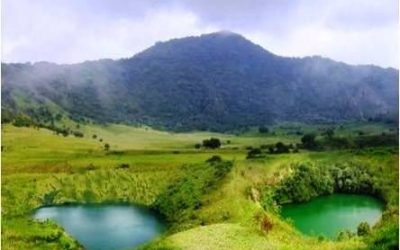
While in the forest, the team found it a little tricky to distinguish the Lophira seeds given their brownish nature as leaves in the forest floor. They were also difficult to be distinguished from those of the threatened Entandrophragma angolenses due to the leaf-like structure on it. However, the round-seeded nut at the bottom clarified doubts and the seeds were distinguished and picked.
The Lophira alata species is a threatened species of plant of the Ochnaceae family. It is found in Cameroon, Congo, Gabon and Nigeria and has been widely exploited mostly for its wood, particularly in Cameroon, Equatorial Guinea and Gabon due to hardness of its wood and larger volume than other woods.
Also the wood is being used for construction work such as hydraulic works, marine construction, bridges and staircases owing to its resistant properties. From a traditional standpoint, experts say the bark extracts of this plant are used as a cure against menstrual/kidney problems, headache and stomach problems. However due to the very high level of exploitation in its areas of distribution, it has been classified as ‘vulnerable’ by the IUCN Red list.
In Cameroon, primary populations of Lophira alata have disappeared since the 1950s and 1960s. Most of the landscapes which harbored these plants are degraded or have almost disappeared completely as a result of human activities in the tropical forests.
In an effort to restore this species and other threatened tree species, ERuDeF in partnership with the Ministry of Forestry and Wildlife has been collecting the seeds of such plants in the Mount Cameroon area to propagate and later replant in the forest in order to replace these globally protected species.
By Adeline Woquan



